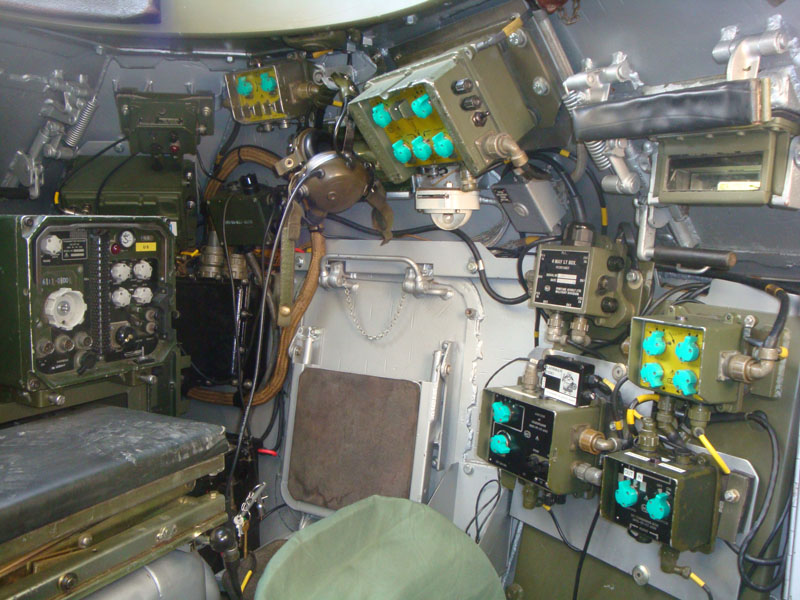The sidebar on the right gives two suggested layouts for intercom, vehicle radios and personal radios using the Clansman family radios, harness and junction boxes. Unlike the earlier Larkspur, Clansman does not have to run through the radio for the intercom to work because the Interconnecting boxes on the harness have their own audio amplifier built-in. The Clansman harness can be operated independently from the radio, which is what the majority of civilian owners do. The Clansman radio control harness is supplied from a 21 – 33 volt (28 volts nominal) vehicle battery supply. Single 12-way interface harness cables can be used to link each junction box in series on the harness, but the harness operates better if the boxes are held on a circuit ring. Power is supplied via two-pin cables, and audio equipment – pressels, commander’s boxes and headsets – clip into the junction boxes via 7-pin snatch quick-release connectors. The IB-2 control box is the heart of the intercom harness, and at a minimum requires a Crew box-2 for the driver and top commander to speak to one another.
The radios fitted to the Ferret would be dependent upon its role of liaison & reconnaissance. They are a deployable asset and need to be controlled by HQ. They also operate in groups in a hostile environment so peer-to-peer communications is important. To this end, most armoured vehicles are capable of carrying two radio sets for their own use. They usually rely on VHF, since that is more reliable over the distances required which are between the squadron; from the squadron to Squadron HQ and for rebroadcast purposes. Because weight is not an issue, most armoured vehicles used two VRC-353 sets. The PRC-351 was designed to be portable and carried at platoon level; the PRC-352 in a semi-fixed role at platoon HQ. The PRC-351 would only be carried when the role called for dismounted surveillance/recce work. (From a practical point of view, it is far easier to enter a Mk 2-3 Ferret using the two VRC-353 sets as a step than it is when a VRC-353 and PRC-351 are fitted side-by-side!)
Auto noise reduction (ANR) is used in Clansman equipment to improve the signal-to-noise ratio and clarity of voice communications by reducing low frequency noise. ANR headsets do this by destructive interference of sound waves (active noise cancellation) using 180° inverted anti-phase waves of the same amplitude to attenuate or reduce unwanted noise. For those interested in the history of the development of ANR noise-cancellation, see here. The Clansman harness ANR junction boxes have a bright yellow or ‘gold’ faceplate as opposed to the black-fronted non-ANR junction boxes. The ANR compatible press-to-talk (PTT) pressel switches are green, as opposed to the black pressel switches used for non-ANR equipment. Internally the junction boxes are essentially the same, but the ANR ones have an 18 volt power feed through pin C of the main cable assembly connector to the vehicle harness.
There are three designs of ANR headset:
- ANR Crewguard Headset (RA 180/1007) NSN 5965-99-614-7484 – for an ‘A’ vehicle, these will clip into a helmet
- ANR Combat Headset (RA 195/1012) NSN 5965-99-983-6213
- ANR Crewbrief Headset [no microphone] (RA 195/1010) NSN 5965-99-225-5010
Clansman ANR headsets carry smaller, slimmer, microphones than the earlier non-ANR types, with matching wind mufflers.
The ‘A’ vehicle Mk5 Combat Vehicle Crewman’s Helmet NSNs can be found listed here
Sometimes the screws holding the metal yoke to the ear shells of the headset become loose and fall out. Here is a picture of the screw, spacer and washer replacements. You can get replacements from LR series (Clansman fixing overhaul kit 0112442).


